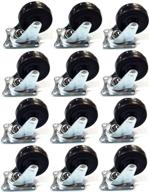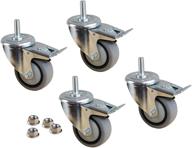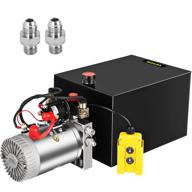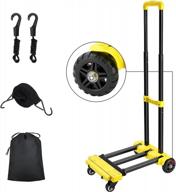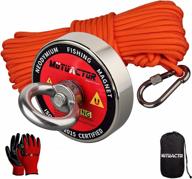Another interesting products
Hydraulic Lifting Pumps: A Powerful Material Handling Tool
Chances are you've used or benefited from a hydraulic lifting pump without even realizing it. From elevators and car lifts to forklifts and pallet jacks, hydraulic lifting pumps enable many of the machines we rely on for material handling and transportation.
Hydraulic lifting pumps are a type of hydraulic pump that use pressurized hydraulic fluid to generate upward thrust or lifting force. They enable loads weighing thousands of pounds to be lifted, lowered, and moved seamlessly with the use of controls.
How Hydraulic Lifting Pumps Work
The basic mechanism of hydraulic lifting pumps involves piston-driven pressurization of hydraulic fluid to actuate cylinders or motors:
- The pump piston draws low pressure hydraulic fluid from the reservoir and pushes it into the hydraulic circuit under high pressure.
- This pressurized fluid is directed via control valves to the cylinder or motor.
- The pressurized fluid pushes against the cylinder piston, causing it to extend and generate upward force.
- Lifting capacity is increased by using larger cylinders and higher pressure ratings.
Key Applications
Hydraulic lifting pumps enable material handling equipment like:
- Forklifts - Lift and tilt forks for pallet and load manipulation.
- Scissor Lifts - Raise personnel or equipment to height.
- Car Lifts - Lift vehicles for maintenance access.
- Cranes - Lift and swing heavy loads.
- Dump Trucks - Lift and tilt dump beds.
They are an indispensable tool for safely lifting and moving loads in manufacturing, construction, shipping, auto repair, and many other industries.
Top products in 🚜 Hydraulic Lifting Pumps
Types of Hydraulic Lifting Pumps
There are three primary types of hydraulic pumps used in lifting applications - piston, vane, and gear pumps. Each has distinct operating principles and advantages.
Piston Pumps
Piston pumps, also called positive displacement pumps, are a common pump type used when high pressures and heavy-duty lifting capacity are needed.
- A piston reciprocates inside a cylinder barrel to create flow.
- On the intake stroke, the piston retracts and hydraulic fluid fills the cylinder.
- On the discharge stroke, the piston extends, pressurizing the fluid.
- Compact axial piston pumps can generate up to 5000 psi.
Benefits of piston pumps:
- High pressures and power density.
- Good efficiency even at high speeds.
- Durable construction for long life.
- Used in cranes, dump trucks, lifts, etc.
Vane Pumps
Vane pumps use a rotor with sliding vanes that extend and retract to move fluid.
- As rotor turns, centrifugal force slides vanes out against housing.
- Fluid chambers expand and draw in fluid, then contract to discharge it.
- Generate smooth, pulse-free flow at moderate pressures.
- Typically max out around 3000 psi.
Benefits of vane pumps:
- Smooth operation and flow characteristics.
- Compact, simple construction.
- Used in scissor and boom lifts.
- Also in aircraft, agriculture, construction equipment.
Gear Pumps
Gear pumps use meshing gear teeth to carry and discharge fluid.
- Gears draw fluid into the enlarging cavity between teeth.
- Mesh point squeezes fluid out the outlet.
- Generate up to 1500 psi pressure.
- Often used as charge pumps to replenish hydraulic circuits.
Benefits of gear pumps:
- Compact, inexpensive construction.
- High-speed capability.
- Used in scissor lifts, jacks, cranes, power units.
- Reliable, long-lasting operation.
Understanding the operating principle and capabilities of each pump type allows selection of the optimal pump for the lifting application.
Key Features of Hydraulic Lifting Pumps
Selecting the right hydraulic lifting pump requires evaluating key performance parameters and design features that match the requirements of the application.
Power and Displacement
Pump power, typically measured in horsepower or kilowatts, must be adequate for the weight loads and lifting speeds needed.
- Higher power enables faster cycle times when lifting heavy loads.
- Displacement, or output flow rate, also affects lift speed and force.
- Larger displacement pumps fill lift cylinders faster.
Pressure Rating
The pressure rating correlates with the lifting capacity and force the pump can generate.
- Higher pressure ratings increase cylinder force and load capacity.
- But running too high pressure reduces efficiency and causes overheating.
- Match rating to expected load weights plus a safety factor.
Similar products


41 Review

Hydraulic Circuit
Custom hydraulic manifolds efficiently direct flow for lift and lower cycles.
- Integrated hydraulic valves simplify flow control.
- Include safety valves to prevent overload conditions.
- Optimized hose routings reduce pressure losses.
Control System
Precise speed and position control enables smooth lifting and lowering.
- Electronic controls allow adjustable lift profiles.
- Joystick, radio remote, or PLC interfaces available.
- Feedback sensors improve position accuracy.
Choosing pumps with power, pressures, circuits, and controls tailored for the application results in optimal performance and safety.
Buying Considerations for Hydraulic Lifting Pumps
Several important factors should be evaluated when selecting hydraulic lifting pumps to find the optimal product for your application and budget.
Pump Capacity
Determine required pump flow rate and pressure rating to handle expected load weights and cylinder sizes.
- Check pump displacement, max pressure, and horsepower ratings.
- Select a pump with at least 20% extra capacity for safety factor.
Construction Materials
Choose rugged pump construction that will withstand environmental conditions.
- Cast iron housings and steel shafts for durability.
- Stainless steel or bronze for corrosion resistance if needed.
- Reinforced thermoplastics for light weight.
Brand Reputation
Stick with major hydraulic brands like Parker, Eaton, Bosch Rexroth, etc. for quality and support.
- Check manufacturer production experience and lead times.
- Ensure they have replacement parts and service options.
Operating Efficiency
Higher efficiency pumps save on energy costs long-term.
- Look for optimized displacement designs.
- Percent efficiency ratings should be high.
Noise Level Ratings
Consider noise ratings if pump will be around workers.
- Higher quality pumps produce less audible noise.
- Compare decibel ratings between models.
Pricing
Balance purchase price versus quality, warranty, and operating costs.
- Cheap pumps may fail sooner.
- Higher price can equal lower maintenance costs.
Evaluating these criteria helps select reliable hydraulic lifting pumps for each unique situation.
Key Applications of Hydraulic Lifting Pumps
Hydraulic lifting pumps enable many essential material handling tasks across a diverse range of industries. Here are some of the top applications where hydraulic lift technology delivers safe and efficient movement of heavy loads.
Manufacturing
- Pallet jacks - Lift and transport finished goods and raw materials up to 5,000 lbs.
- Scissor lifts - Provide maintenance access for workers and equipment.
- Cranes - Hoist and position materials and machinery weighing tons.
- Assembly lifts - Adjust working height ergonomically at subassembly stations.
Warehousing
- Pallet jacks - Quickly move and stack pallets of inventory.
- Reach trucks - Lift and transport palletized goods to high storage racks.
- Order pickers - Allow picking at elevated warehouse levels.
Transportation
- Lifting axles - Lift extra wheels into place for heavier loads.
- Tilt deck trailers - Hydraulically tilt cargo beds for loading and unloading.
- Dump trucks - Lift and tilt large container beds.
Construction
- Boom lifts - Position workers and materials up high.
- Forklifts - Hoist building materials and supplies.
- Compressors - Provide power for pneumatic tools.
Across these fields and many more, hydraulic lifting technology provides a versatile and controlled means of handling loads safely and efficiently.
Benefits of Amazon Prime for Buying Hydraulic Lifting Pumps
Amazon Prime provides several advantages when purchasing hydraulic lifting pumps and other industrial equipment online. Here are some of the top benefits Prime members enjoy.
Free Two-Day Shipping
Amazon Prime offers free two-day shipping on millions of products, including most hydraulic pumps. This allows you to get the equipment you need quickly without paying extra for expedited delivery.
With Prime's reliable and fast fulfillment, you can conveniently order pumps as needed instead of stockpiling parts onsite.
Free Returns
Amazon Prime simplifies returns by providing free return shipping on eligible items. This makes it easy to exchange hydraulic pumps if you get the wrong model or need to replace a defective unit.
The peace of mind that returns will be easy reduces the risk of buying pumps online instead of inspecting them locally first.
Prime Day Deals
Amazon Prime members get exclusive access to deals on Prime Day, Amazon's annual sales event. Prime Day brings major discounts on thousands of items, including top hydraulic pump brands.
Watching for hydraulic equipment deals on Prime Day is a great way to save money on high-quality pumps, cylinders, valves, and accessories.
Business Purchasing Options
Amazon Prime members get access to business purchasing programs like Amazon Business, enabling easy ordering, discounts, and consolidated billing for companies.
This makes it fast and affordable for operations of all sizes to purchase the hydraulic lifting equipment they need through their Prime membership.
The selection, convenience, and savings Amazon Prime provides makes it an excellent option for buying hydraulic pumps and other industrial parts online.
Discover The Best Hydraulic Lifting Pumps For Your Material Handling Needs
When it comes to finding the best hydraulic lifting pumps for your material handling needs, there are several options available. Here are some resources to help you make an informed decision:
- Amazon Best Sellers: Best Hydraulic Lifting Pumps
- Hydraulic Lifting Pumps - Material Handling Products: Industrial & Scientific - Amazon.com
- Best Hydraulic Lifting Pumps Reviews and specifications... - Revain
- The 30 Best Hydraulic Lifting Pumps of 2023 [Verified] - Cherry Picks
- Hydraulic Lift Manufacturers | Hydraulic Lift Suppliers
- Hydraulic Lift System Manufacturers Suppliers








